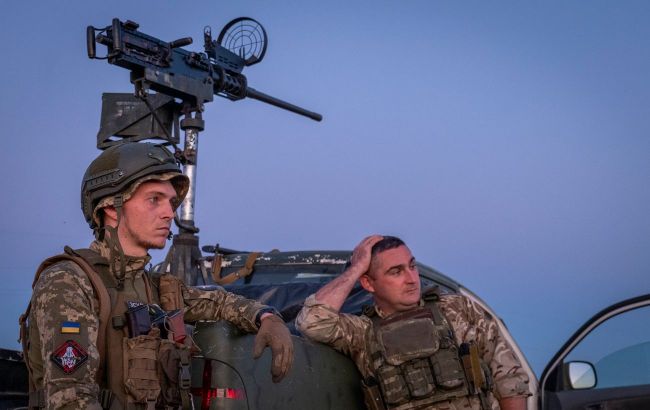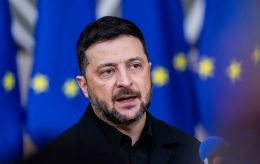Ukrainian Air Force reveals key detail of Russia's overnight attack
 Photo: Russians attacked Ukraine on the night of October 10 (Getty Images)
Photo: Russians attacked Ukraine on the night of October 10 (Getty Images)
Last night, Russia launched a combined massive strike on Ukraine, using several types of missiles and drones at once. Russian attacks were scattered across different regions, targeting energy and gas production infrastructure, according to Yurii Ihnat, head of communications for the Ukrainian Air Force Command.
"Unfortunately, we have another combined strike, as they call it. Why combined? It means the use of a large number of different types of air attack weapons. These include drones, aeroballistic, ballistic, cruise, and aviation missiles," Ihnat said.
He explained that today's strike is more dispersed, not targeting one specific area, but rather affecting various regions.
"The peculiarity of this strike is the use of a large number of ballistic missiles. In addition to two aeroballistic Kinzhal missiles, 14 Iskander-M or KN-23 ballistic missiles were used at once," he noted.
According to Ihnat, these ballistic missiles were used to attack different regions from different directions.
"The main strike was directed at critical infrastructure. Recently, Russia has been targeting our energy sector, as well as our gas production facilities, but today, Russia launched a concentrated strike on the energy sector," Ihnat emphasized.
He noted that last night, Russia launched one of its largest attacks:
- Over 30 missiles,
- Over 450 drones of various types, including about 200 Shaheds.
According to Ihnat, Russia is constantly improving its suicide drones. Previously, the Shaheds were simply repainted black, but now they are equipped with cameras and other new elements. Experts are carefully examining the debris found to determine what changes and technologies Russia is using.
He explained that this information is subsequently provided to partners to strengthen sanctions pressure, among other things.
Ihnat believes that both missiles and Shahed drones can be improved in certain ways to make them more difficult to suppress with electronic warfare means and more difficult to hit with firepower.
The head of the Air Force Command's Communications Department noted that during today's attack, even one of the Kinzhal missiles and four ballistic missiles were intercepted.
Ihnat also noted that Patriot is a powerful system that can indeed shoot down ballistic missiles. But it has limitations — its effective range relative to the ballistic trajectory is relatively small, approximately several tens of kilometers (roughly up to ~25 km).
Because of this, in order to reliably cover the entire territory of Ukraine, a large number of such systems are needed — otherwise, during massive attacks, when many ballistic missiles are flying from different directions (as is the case today with Iskander-M and KN-23), interception cannot always be fully ensured.
Russian strike on Kyiv on October 10
Starting late in the evening of October 9, Russians launched a massive attack on Kyiv and Ukraine.
Russia launched drones in the direction of the capital, causing explosions in the city. At least 12 people were injured as a result of the shelling.
Russia's main targets remain energy infrastructure facilities.
The Ministry of Energy of Ukraine has confirmed that Russian forces have again launched massive attacks on energy facilities. Energy workers are currently working to minimize the impact of the strikes and restore a stable power supply as quickly as possible.
Due to damage to infrastructure in several regions, emergency power outage schedules are already in effect to keep the power grid running and ensure people's safety.
For more details about the nighttime massive attack and its consequences, see the RBC-Ukraine's report.

